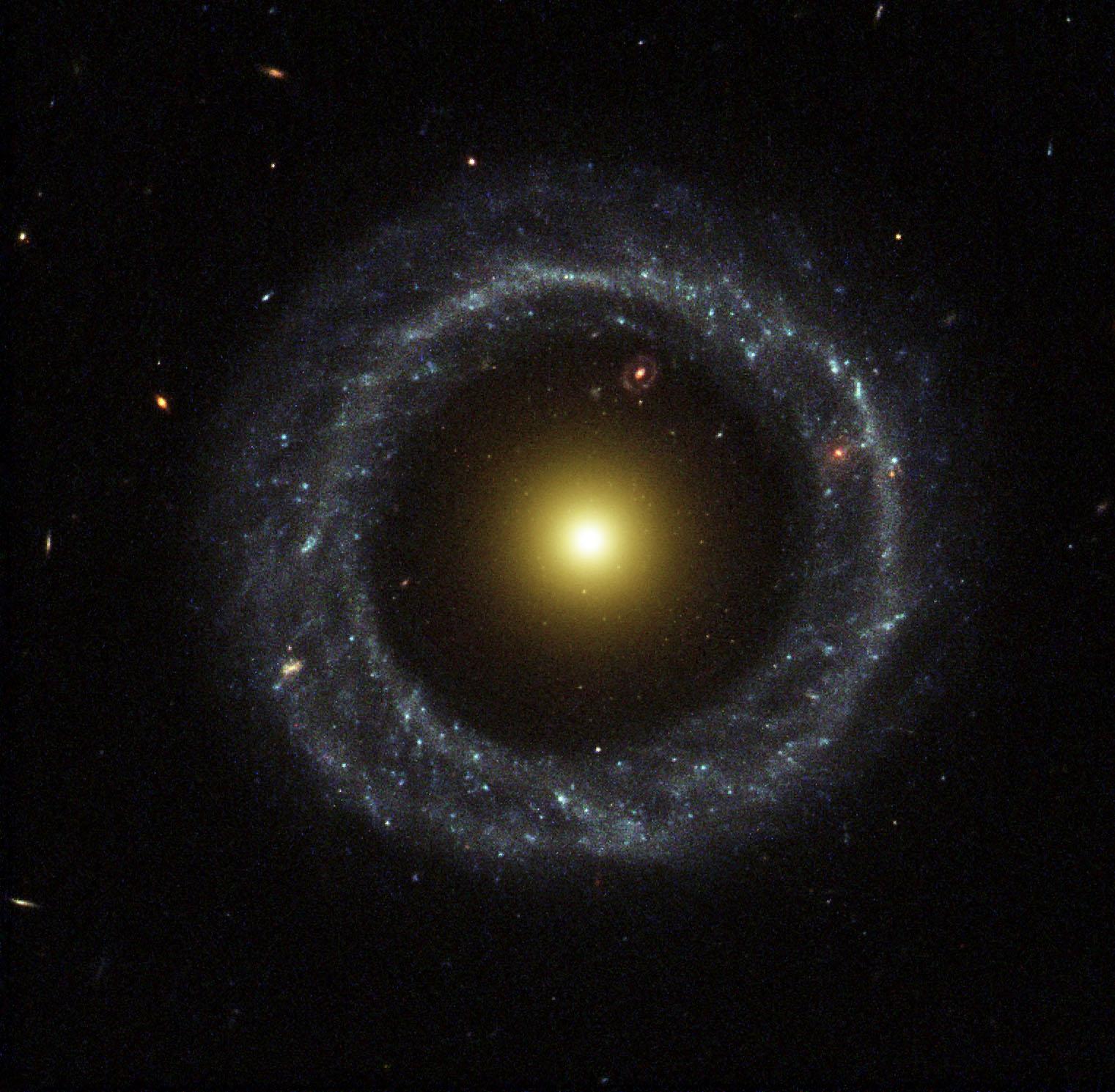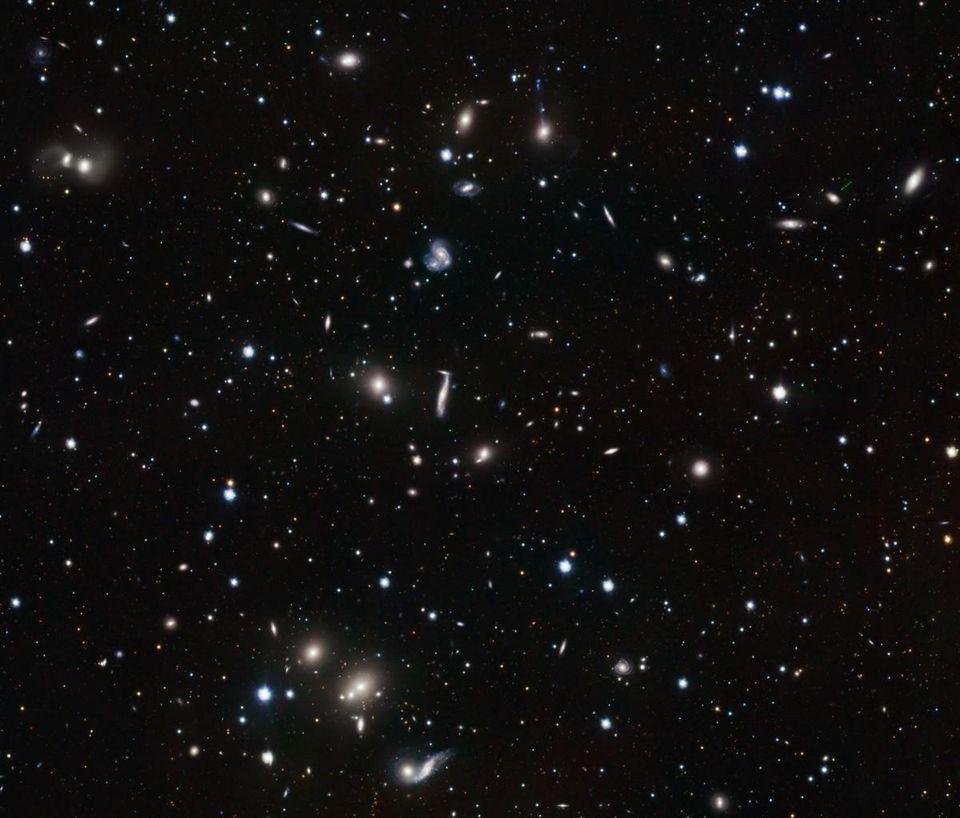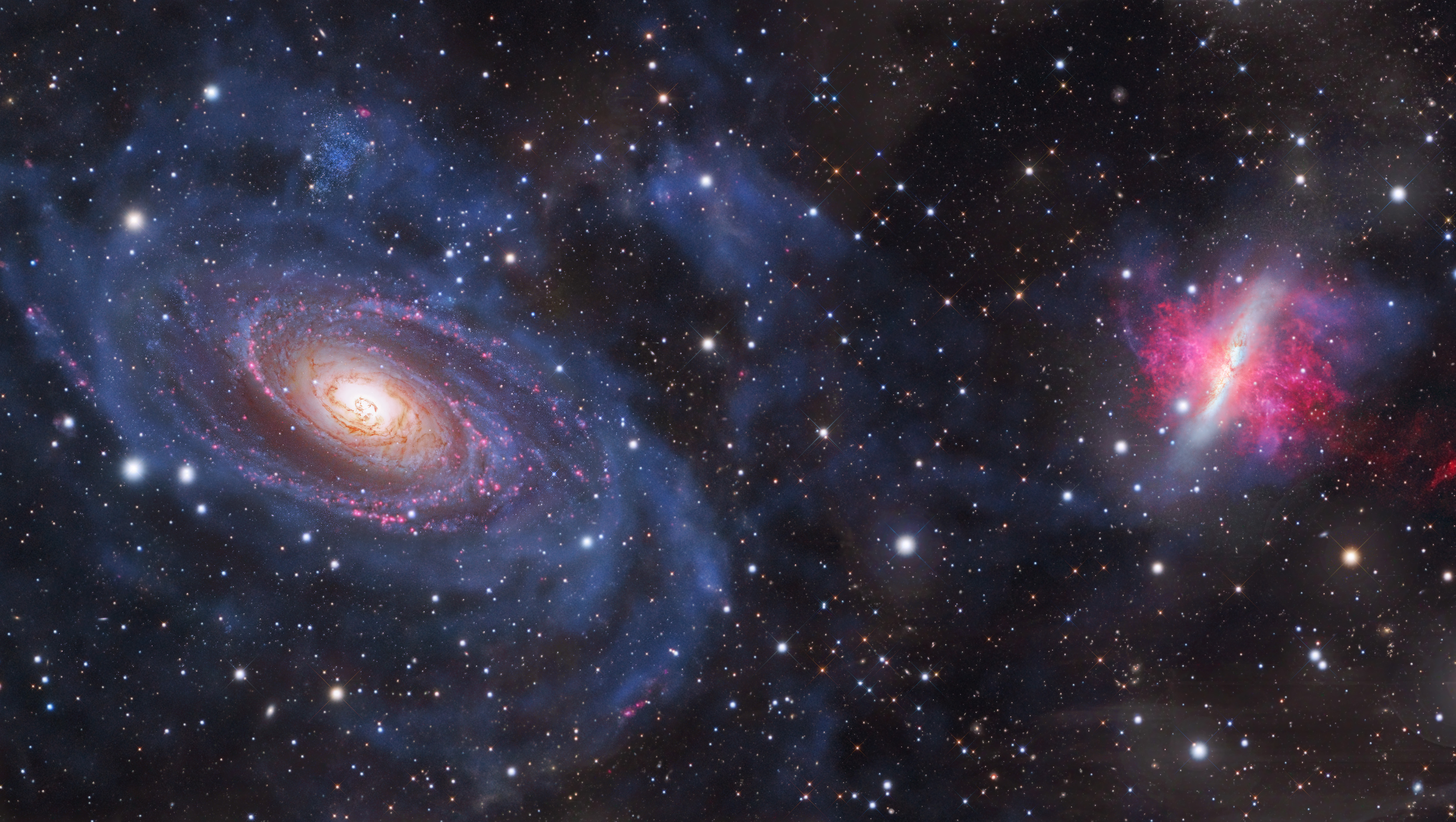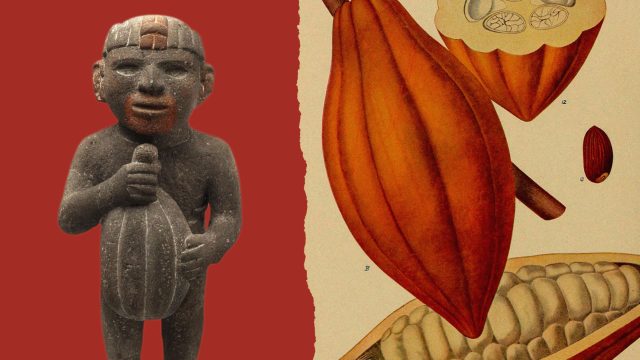Ask Ethan: Why do galaxies spin?
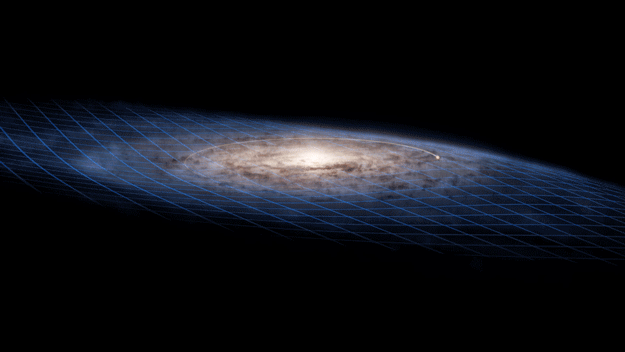
- All throughout the Universe, the bound structures that we see, from planets to stars to stellar systems to entire galaxies all spin, rotate, and have large amounts of net angular momentum.
- But angular momentum is a quantity that’s always conserved, and the Universe is born with very, very little angular momentum overall.
- So why, then, do all of these entities spin, rotate, and revolve, and where does all that angular momentum come from? This is one cosmic puzzle that we actually think we can explain.
For every phenomenon we observe in the Universe, there’s some underlying cause that ought to explain its behavior. Given the laws of physics, the fundamental objects that exist, and the way that they assemble based on the interactions between them, we should be able to derive solid, robust predictions that agree with the Universe we see today. In other words, for every effect that we see, the quest of science is to understand the cause of that effect. Sometimes, however, this is easier said than done. Certain effects, like the matter-antimatter asymmetry, the gravitational behavior of large-scale cosmic structure, and the accelerated expansion of the Universe are all well-established, but their underlying cause remains obscure.
But some phenomena truly can be explained, scientifically, even if the explanation isn’t immediately apparent. Maynard Falconer writes in with precisely such a question, asking:
“Angular [momentum] is one of the fundamentals that needs to be conserved and is [a] major component in determining the shape of large and small cosmic structures. Did the universe start with [a] net angular momentum of zero? What is the relationship between angular momentum… and galaxies, galaxies and their solar systems, solar systems and the various bodies inside of them, etc.?”
These are great questions, and the cosmic story we’ve put together can put it all in context. Let’s start at the beginning and dive in!
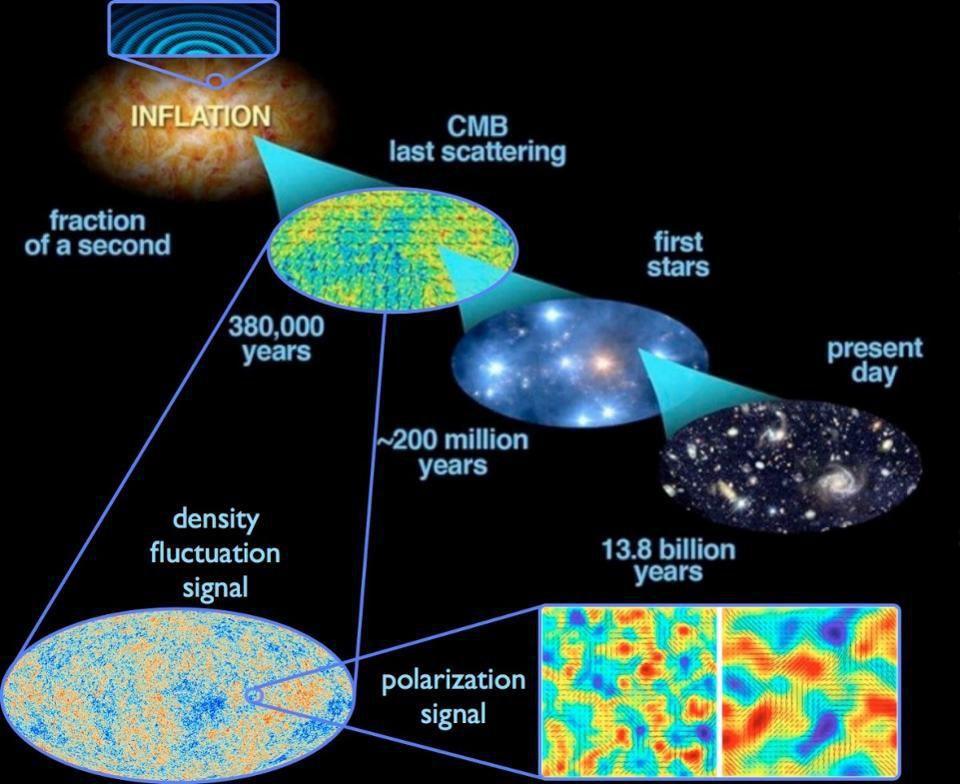
Before the hot Big Bang took place, a period of cosmic inflation occurred: stretching the Universe flat, creating uniform conditions everywhere, and imprinting a series of small-magnitude fluctuations on all cosmic scales. These fluctuations include density imperfections, gravitational wave imperfections, and also angular momentum imperfections. Yes, that’s right: when the hot Big Bang first occurred, it wasn’t just born with the seed fluctuations that would lead to the growth of stars, galaxies, and the large-scale structure of the Universe, but it was born with an intrinsic amount (and distribution) of angular momentum, too.
But then something happens: the Universe expands. Certain types of imperfections grow in the expanding Universe — like density fluctuations — while other types of imperfections decay. The seeds of angular momentum fall into the latter category, and it’s easy to visualize. You’re all familiar with a figure skater spinning around and then pulling their arms and legs in, spinning up and rotating faster in the process. Well, the expanding Universe is exactly the opposite of that: whatever angular momentum you start with, the act of expansion pushes the mass away from your center, causing you to rotate slower and slower. Eventually, regardless of what angular momentum you began with, your spin and/or rotational motion becomes negligible.
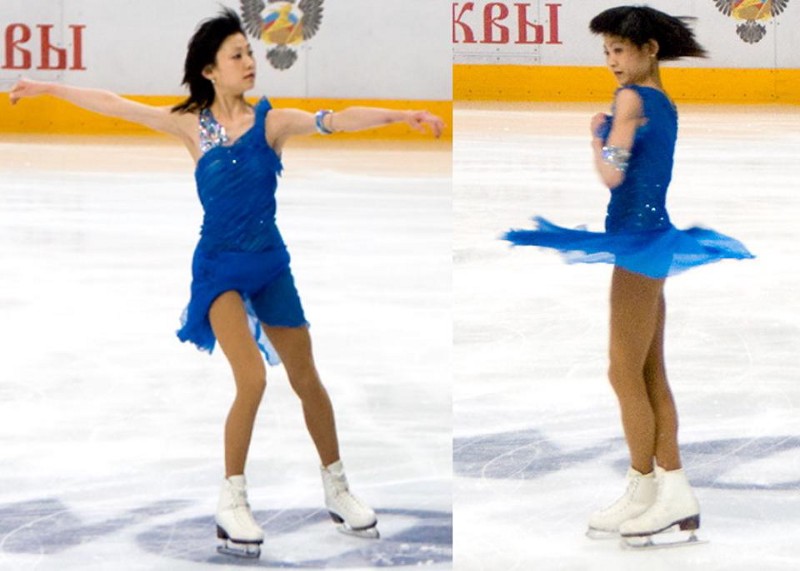
But you shouldn’t forget about it entirely! Over time, the growing density imperfections will eventually cross a critical threshold due to gravitational growth: they’ll lead to the overdense regions becoming about ⅔ denser than the overall cosmic average density. Whenever a region crosses that density threshold, it becomes gravitationally bound, and not only starts to contract — overcoming the cosmic expansion — but it begins to pull in more and more matter from the surrounding regions. It’s well on its way to forming stars and growing into a proto-galaxy or even a larger cosmic structure.
When that occurs, two things begin to happen.
- Remember that initial angular momentum that it was “born” with? Well, now that this mass is contracting after expanding, it’s starting to spin up and increase its rotation rate again. That initial angular momentum didn’t go away, and now, as it shrinks down, it has a chance to become important again.
- And the other masses in the Universe, particularly the nearby overdense and underdense regions, exert tidal forces on it. The “nearer” side to the mass experiences a greater gravitational force than the “farther” side from the mass, and this can not only stretch the object, but can cause a torque: leading to an angular acceleration and a net rotation.
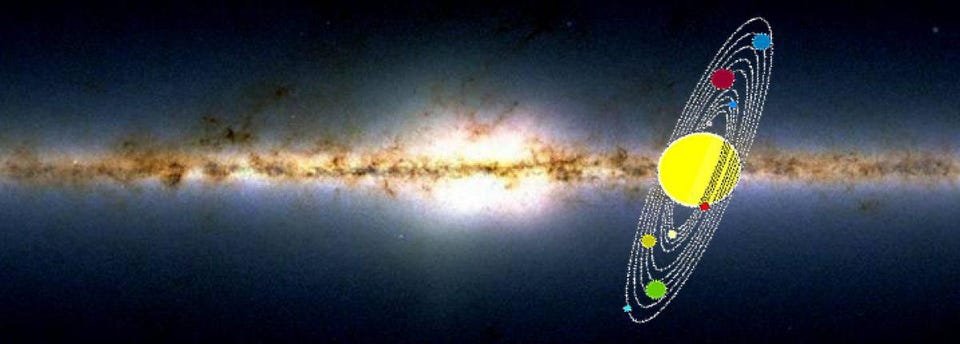
In fact, this “tidal torque” phenomenon is one of the most likely culprits of the origin of how individual galaxies and stellar systems acquire their spins and net angular momenta. Whenever a large object passes close by another mass, the tidal forces actually get stronger more quickly than the gravitational forces do. Gravity, remember, is a ~1/r2 force, at least according to Newton. (And only in very strong gravitational fields is it different, even according to Einstein.) That means if you bring a mass closer to an object — to 10%, 1% or 0.1% of the original distance — the gravitational force becomes a hundred, ten thousand, or even a million times as strong as the original gravitational force.
But tidal forces obey a different rule: they behave as a ~1/r3 force. That means they become less important at large distances compared to the gravitational force, which is why even though the Sun is 27 million times more massive than the Moon, the Moon’s tidal forces on Earth are about three times the strength of the Sun’s. That closer distance is tremendously important. When you bring a mass closer to an object — to 10%, 1% or 0.1% of the original distance — the tidal force acting upon the object becomes a thousand, a million, or even a billion times as strong as the original tidal force.
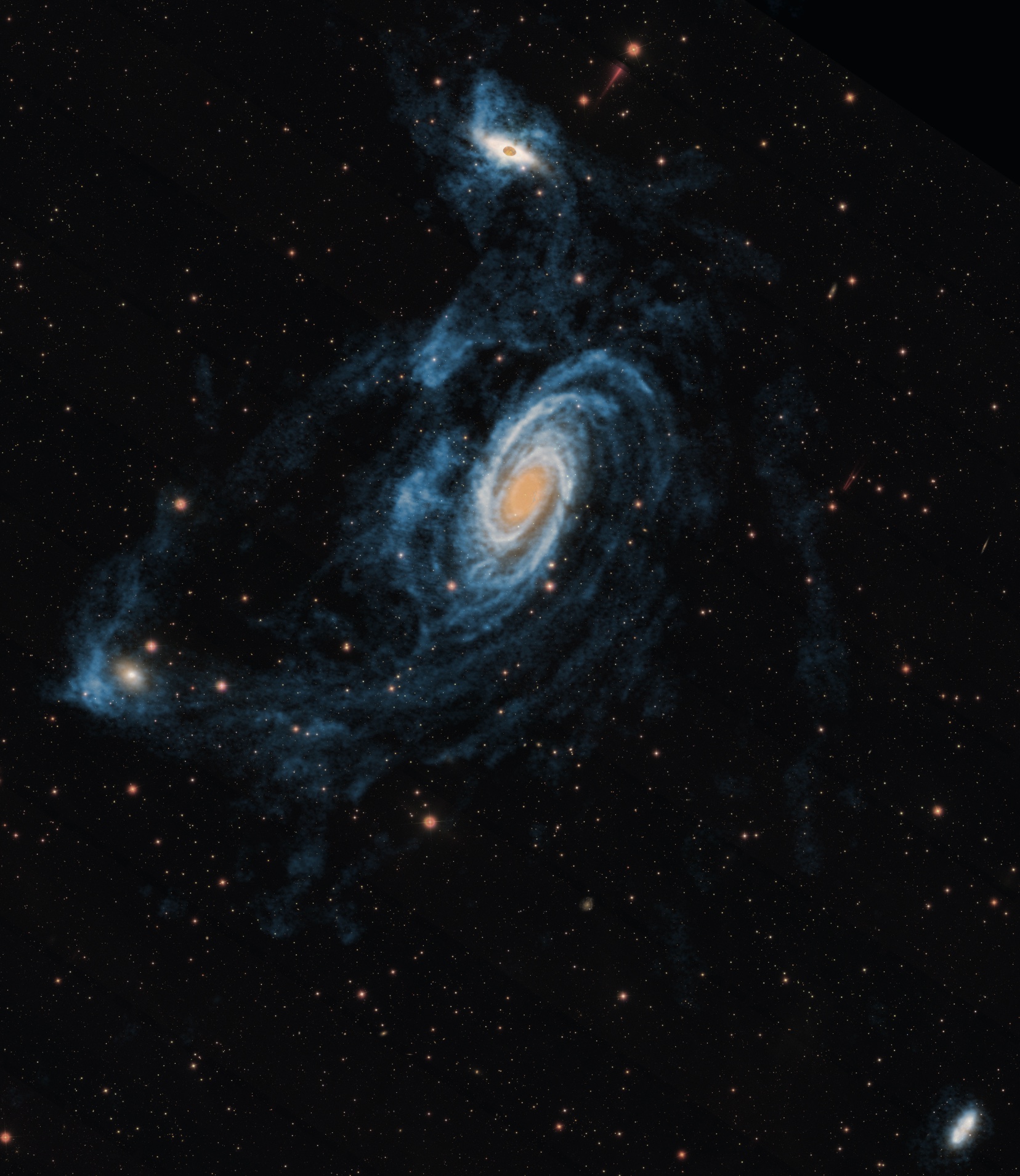
In what I’ll call “messy” astrophysical environments, where there are lots of dense clumps of matter acting at short distances on one another, tidal torques can quickly transform a series of systems that aren’t rotating into a set where every single system has an overall, net rotation. This plays an especially strong role in stellar nurseries and star-forming regions, where new stars and stellar systems are being born.
Take a cloud of gas, make it massive enough, let it cool, and watch it gravitationally collapse. As the collapse begins, it will start to fragment into individual regions, some with greater amounts of mass and higher densities and others with lesser amounts of mass and lower densities. The highest density, highest mass regions will collapse first, forming what you can visualize as a massive potato-shaped object: a three-dimensional irregular structure, where one axis is the longest and another axis is the shortest.
Gravitational collapse always proceeds fastest along the shortest direction, and when that occurs, you get a “splat,” or what astrophysicists call a pancake. In the aftermath of this pancaking, there’s always a circumstellar disk surrounding the largest, densest mass(es): the protostar(s).
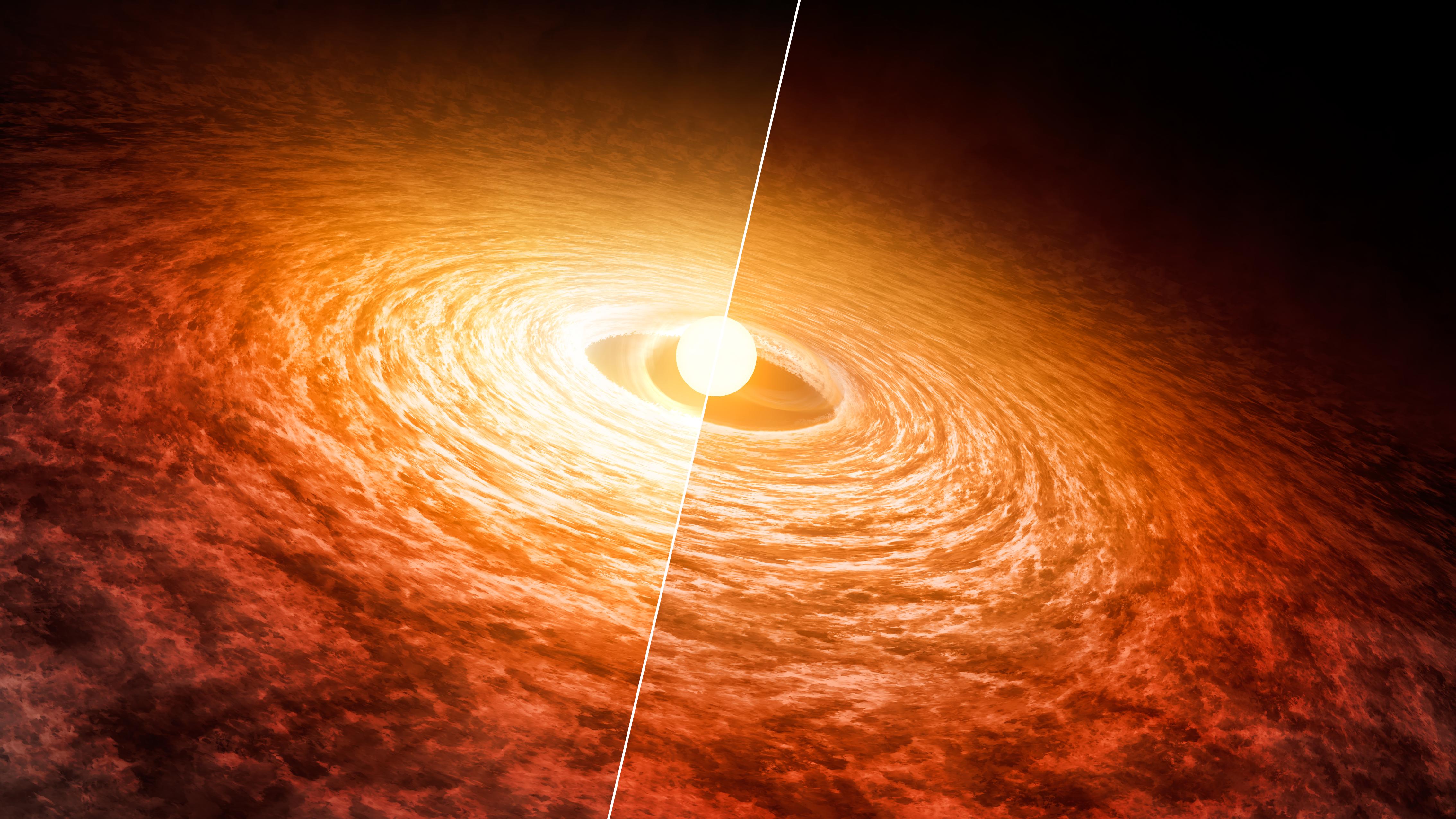
Even a tiny amount of initial angular momentum — which every such proto-stellar system acquires — is enough to ensure that each protoplanetary disk comes along with a net angular momentum, and this leads to a mature stellar system where, overall, there’s a preferred direction for the mature star, planets, and moons that arise to all move in. In particular:
- the star will have a preferred axis and direction of rotation,
- the planets will preferentially orbit around the star in that same direction,
- the moons of those planets will preferentially orbit around each planet in that same direction,
- each planet will rotate around its axis in that same direction,
- and the only exceptions will arise from collisions, mergers, or gravitational interactions between objects or proto-objects within that same stellar system.
We see the evidence of this in exoplanetary systems, in protoplanetary disk systems, and even in our own Solar System, where the only exceptions are the rotations of Venus and Uranus (which were likely knocked over by collisions) and moons that arose via gravitational capture, like Neptune’s Triton or Saturn’s Phoebe.
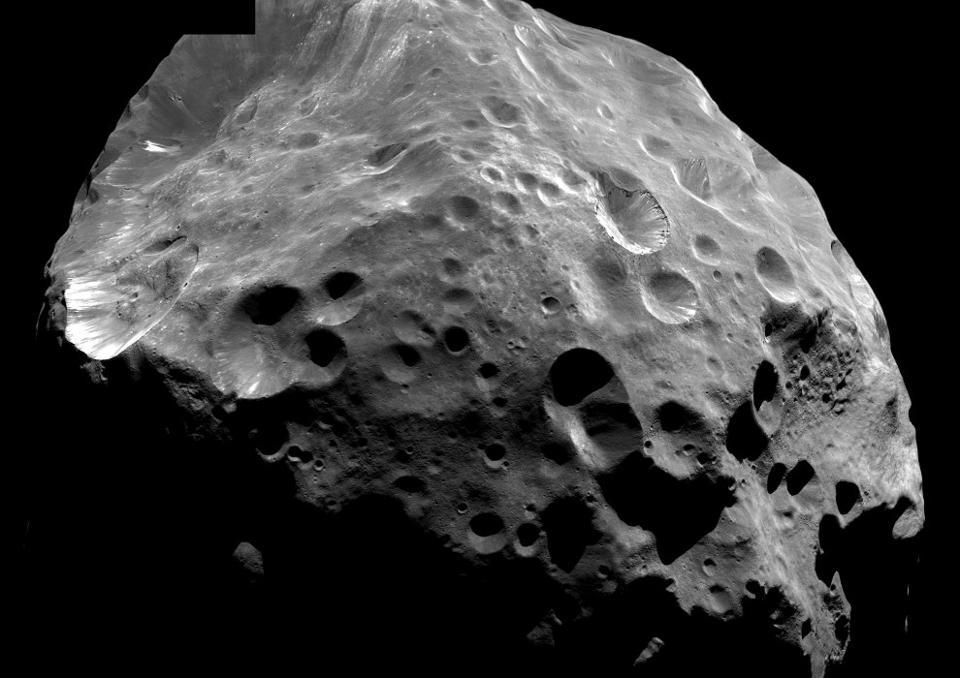
The orientations of stellar systems have, as far as we can tell, very little to do with the overall angular momentum of the galaxies they’re born into; the local dynamics of clumps of matter and the tidal torques arising from them are sufficiently large — in both simulations and via observations — that they can overcome any initial impetus from the overall galaxy as a whole.
Meanwhile, galaxies themselves, in dense environments such as galaxy clusters, experience an analogous phenomenon. The closer you get to the cluster center, the more likely you are to find a spiral or disk galaxy in a completely random orientation. Additionally, as galaxies merge and interact in these dense environments, they become more and more likely to transform into elliptical galaxies, where the smooth, overall spiral structure is instead destroyed, replaced with a random “swarm” of stars within it, moving chaotically like bees surrounding a beehive. When we look at the central regions of the densest galaxy clusters, they’re not only dominated by giant ellipticals, but the spirals and other disk galaxies are completely randomly oriented, as opposed to small satellite galaxies around isolated large ones, which preferentially cluster in a plane.
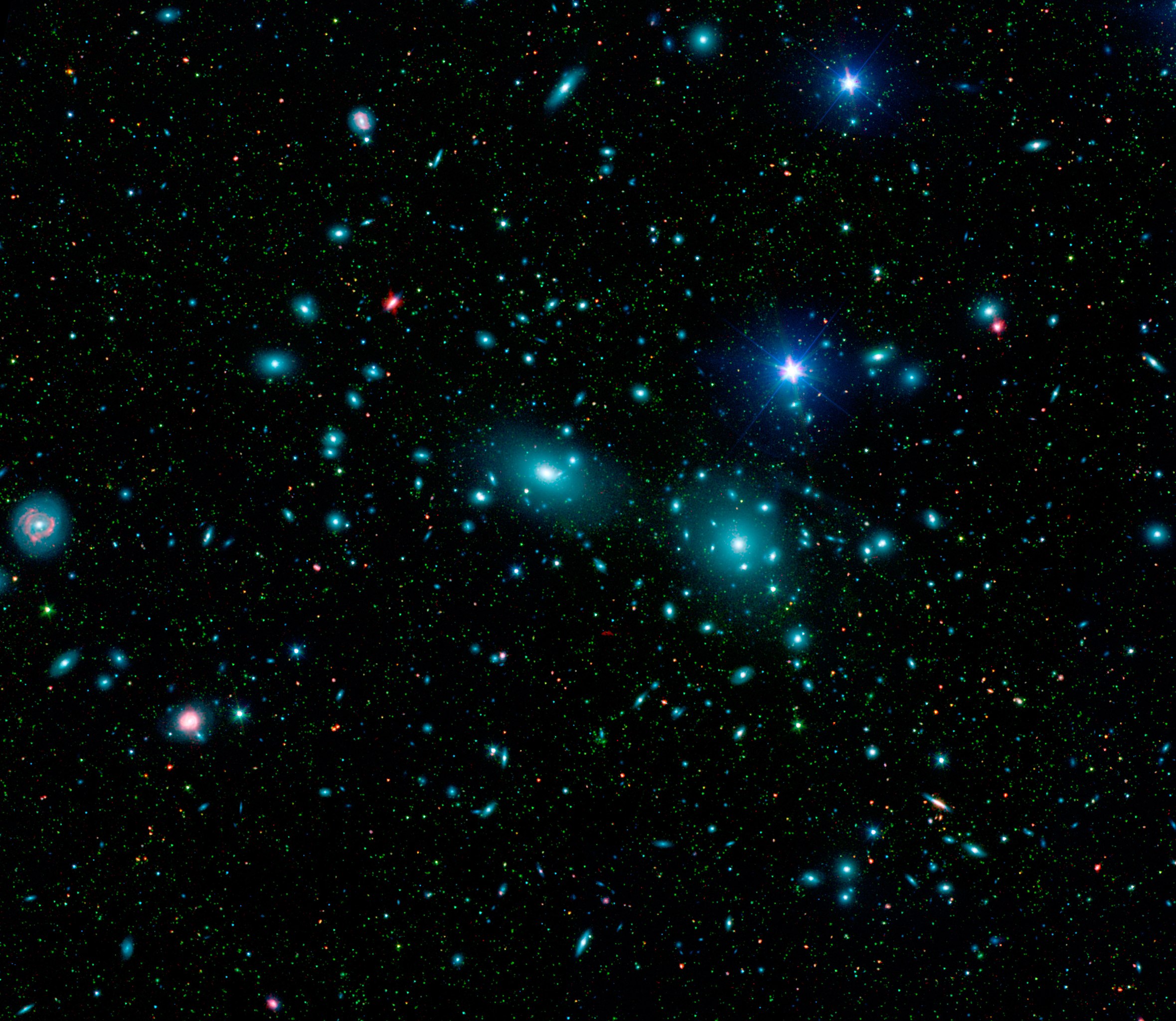
But on large cosmic scales outside of these dense cluster environments, you might wonder if the large-scale structure of the Universe has any effects on the orientation of galaxies that arise. After all, there’s a twofold way that cosmic structure can form, and both influences can matter depending on circumstances and initial conditions: top-down and bottom-up.
Bottom-up structure formation occurs when objects first form on small cosmic scales, and then merge together, interact, and build up to form structure on progressively larger scales. Top-down structure formation, by contrast, occurs when the larger-scale cosmic structures form, and then fragment into smaller components, with the smaller-scale structures maintaining a memory or imprint from the larger-scale structures that they’re derived from.
The messier your environment is, the greater the impact of bottom-up formation is. But when your environment is more pristine — i.e., when there are fewer clumps of matter to interact on smaller scales — you’re much more likely to be influenced by top-down formation. And the largest structures of all arise from the cosmic web, along giant, dark-matter-dominated filaments.
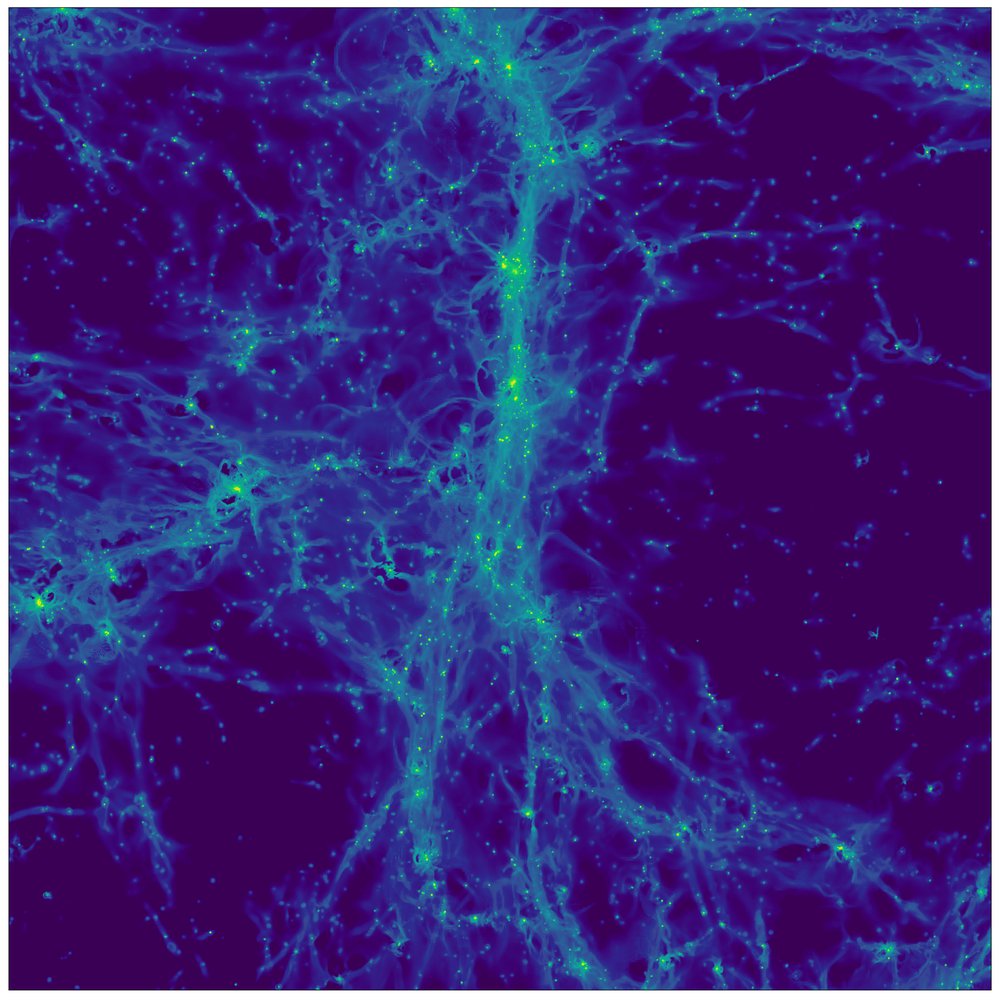
Do these filaments have any sort of influence on the spins and overall rotational orientations of the galaxies that form along them? In a landmark study that just came out in August of 2022, the scientists working on the SAMI galaxy survey concluded that yes, these two phenomena are physically related. What’s remarkable is that galaxies typically have two separate components, the bulge, which is the central portion of the galaxy whose stars exist in a diffuse, elliptical distribution, and the disk, which the most “pancaked” portion of the galaxy that typically rotates in one particular direction.
What the study found was that, relative to the nearest underlying filament in the cosmic web, these associated galaxies have the following properties.
- Galaxies with small-mass bulges have their spins parallel to the closest filament.
- Galaxies with large-mass bulges have their spins oriented perpendicular to the closest filament.
- And galaxies dominated by disks show a variety of different orientations, related to specific motion-related features and also the mass of the central bulge.
The authors believe that spin-filament alignments are largely driven by the growth of the galactic bulge, as both are underpinned by galactic mergers. The greater the number and severity of mergers, the more massive the bulge will be and the greater the likelihood of a spin-filament alignment flip.
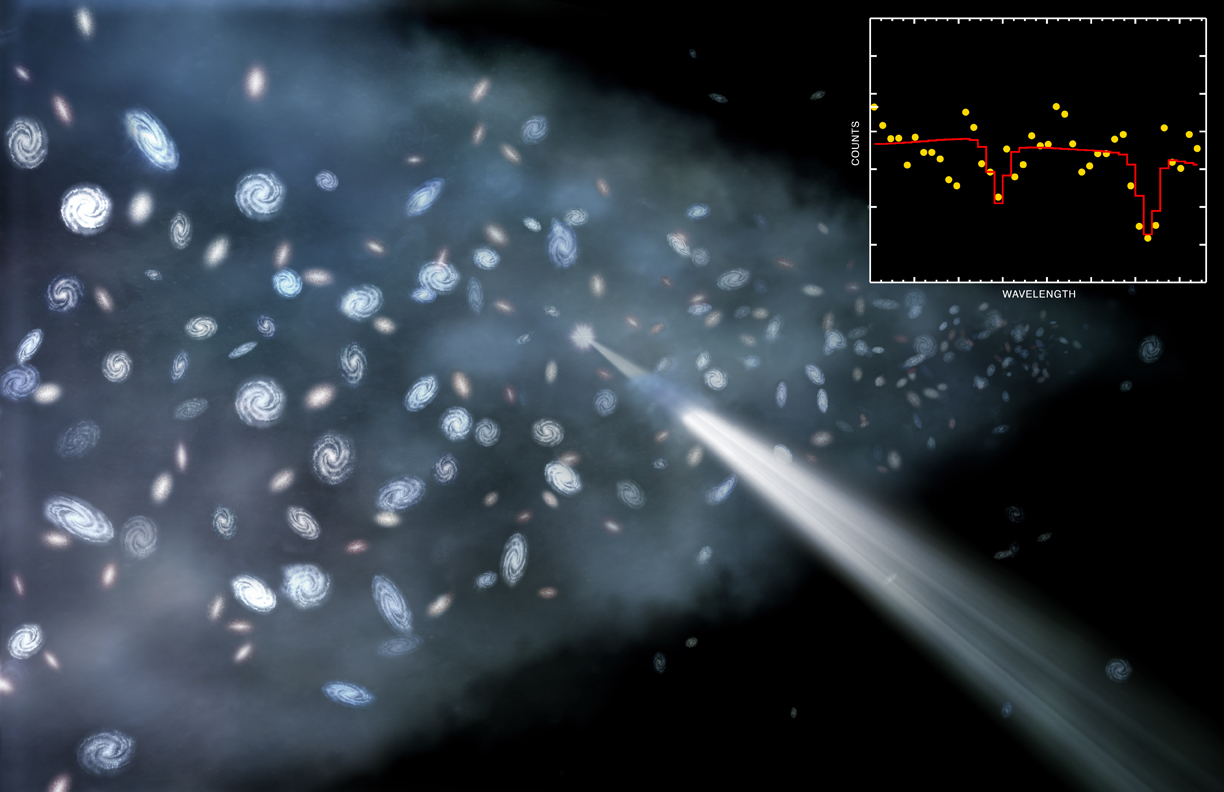
As an active, ongoing area of research, it’s a bit of a stretch to draw a definitive conclusion as to just what, specifically, causes the angular momentum and rotation of each and every object in the Universe. What we can state, however, is that there are three major effects that are certain to combine to explain most of them.
- The original angular momentum that the seeds-of-structure in the Universe were born with, which persist and can become important again once that portion of the Universe stops expanding and begins gravitationally contracting and collapsing.
- The gravitational, tidal interactions between different clumps of matter on small and intermediate cosmic scales, particularly important in dense, rich, chaotic environments.
- And the larger-scale structures that give rise to and influence the substructures that form within and surrounding them, from galaxies forming along cosmic filaments to planets and moons forming within stellar systems and star clusters.
Any particular system will have its own unique combination of these effects that contribute to its overall, net angular momentum, as well as the rotational and revolutionary properties of each of its components. Still, the general conclusion, that all objects possess angular momentum, is very difficult to avoid. Even though the net angular momentum of the overall Universe is likely negligible, the conclusion that each individual component should have an angular momentum of its own is all but inevitable. Our own Solar System, and all of the objects within it, are merely one typical example that illustrates it in action.
Send in your Ask Ethan questions to startswithabang at gmail dot com!

